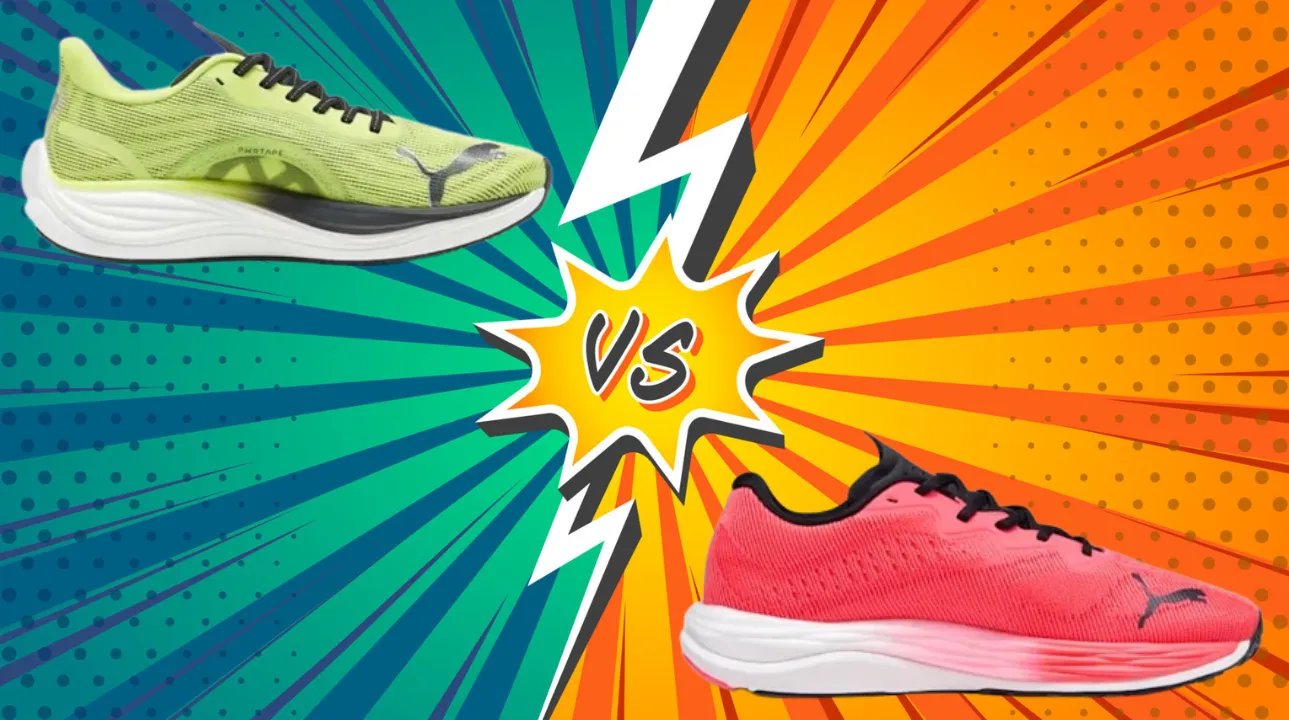Are you an avid runner searching for the perfect pair of shoes to fuel your passion? Look no further than Puma’s latest offerings, the Velocity NITRO™ 2 and Velocity NITRO™ 3. These shoes are designed to cater to the needs of runners, offering a perfect blend of comfort, performance, and style.
In this comprehensive review, we’ll delve into the nitty-gritty of each model, comparing their features, materials, and overall performance. Whether you’re a seasoned marathoner or a weekend warrior, this comparison will help you make an informed decision and find the shoe that best suits your running needs. Get ready to lace up and hit the pavement with confidence!
Comparison Table between Velocity NITRO™ 2 and Velocity NITRO™ 3:
| Feature | Velocity NITRO™ 2 | Velocity NITRO™ 3 |
|---|---|---|
| Launched In | 2023 | 2024 |
| Stability | Moderate | Neutral |
| Flexibility | Moderate Fkexibility | Moderate |
| Sizing | Runs Long & Narrow | Narrow Fit |
| Weight | 9.91 oz (Men’s 10.5) | 10oz/283g |
| Cushioning | NITRO Foam | Supercritical Foam |
| Outsole | Puma Grip | PumaGrip |
| Midsole | NITRO Foam with EVA | Supercritical Foam |
| Upper | Breathable Mesh | Breathable Mesh |
| Retail Price | $120 | $135 |
Feature comparison:
1) Material: Outsole, Insole, Upper
The Velocity NITRO™ 2 and Velocity NITRO™ 3 share some similarities in their material construction, but also boast distinct differences. Both shoes feature a breathable mesh upper, ensuring your feet stay cool and dry during those grueling runs.
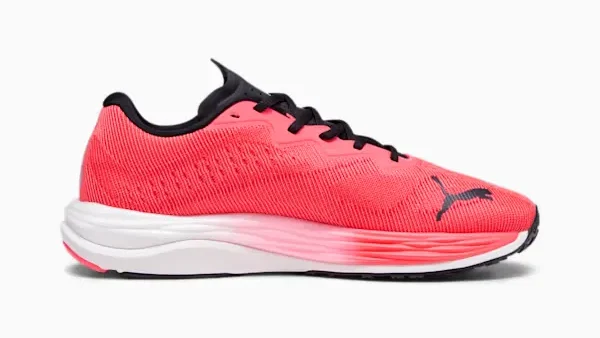
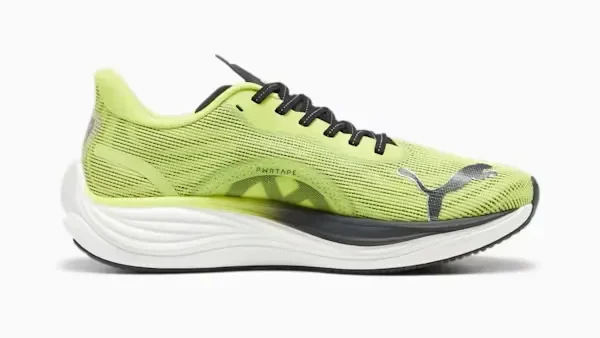
However, the Velocity NITRO™ 2 utilizes Puma’s proprietary NITRO foam in its midsole, combined with an EVA layer for added cushioning and responsiveness. In contrast, the Velocity NITRO™ 3 takes things up a notch with its innovative Supercritical foam midsole, a cutting-edge material designed to provide superior cushioning and energy return.
2) Durability:
When it comes to durability, both shoes are built to withstand the rigors of regular training and running. The Velocity NITRO™ 2 features a Puma Grip outsole, which offers excellent traction and durability on various surfaces. Similarly, the Velocity NITRO™ 3 boasts a PumaGrip outsole,
ensuring reliable grip and long-lasting wear. While specific details on the uppers’ durability are not provided, the mesh construction on both shoes is designed to be breathable and durable, ensuring your shoes stay in top shape mile after mile.
3) Fit:
Fit is a crucial aspect when choosing the right running shoe, and both models have their strengths and weaknesses in this department. The Velocity NITRO™ 2 is reported to run long and narrow, which may not suit runners with wider feet or those who prefer a snugger fit.
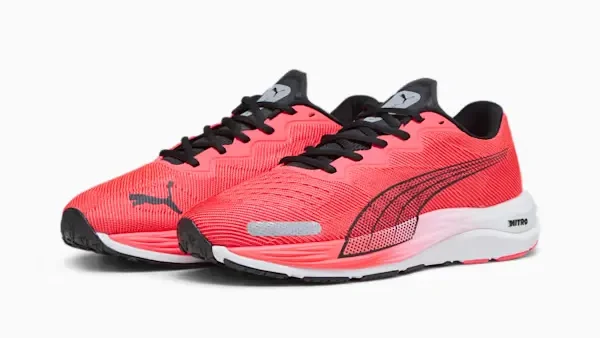
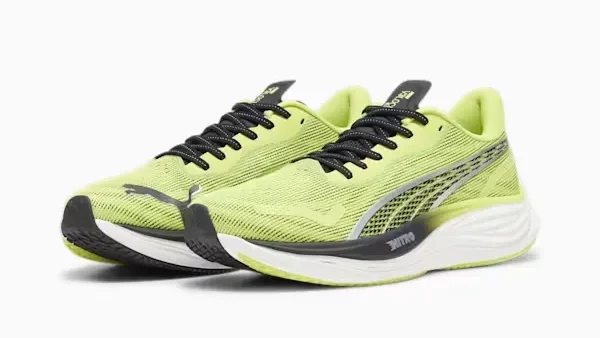
On the other hand, the Velocity NITRO™ 3 is described as having a narrow fit, which could be an issue for those with wider feet. It’s essential to try on both shoes and assess the fit before making a purchase to ensure optimal comfort and performance.
4) Cushioning:
Cushioning is a critical factor for runners, as it can significantly impact the overall comfort and protection during your runs. The Velocity NITRO™ 2 features NITRO foam cushioning, which is designed to provide responsive and comfortable cushioning.
However, the Velocity NITRO™ 3 takes things a step further with its Supercritical foam midsole, a cutting-edge technology that promises superior cushioning and energy return. This advanced foam is likely to provide a more responsive and comfortable ride, especially during longer runs or high-impact activities.
5) Stability:
When it comes to stability, the Velocity NITRO™ 2 and Velocity NITRO™ 3 cater to different runner needs. The Velocity NITRO™ 2 offers moderate stability, making it a suitable choice for runners who require some support but not too much.
On the other hand, the Velocity NITRO™ 3 is designed as a neutral shoe, meaning it provides a more natural ride without additional stability features. Runners who overpronate or require extra support may find the Velocity NITRO™ 2 a better option, while neutral runners may prefer the Velocity NITRO™ 3.
6) Value for Money:
Considering the price point, both shoes offer decent value for money, but the Velocity NITRO™ 2 may have a slight edge. With an MSRP of $120 and an even lower price on Amazon ($80), the Velocity NITRO™ 2 provides a solid combination of performance and affordability.
The Velocity NITRO™ 3, on the other hand, carries a higher MSRP of $135, which may be a deterrent for some runners. However, the advanced Supercritical foam technology in the Velocity NITRO™ 3 could justify the higher price tag for those seeking the latest in cushioning innovation and are willing to invest more for superior performance.
Perfomance comparison:
1) For Walking:
Both the Velocity NITRO™ 2 and Velocity NITRO™ 3 can serve as excellent walking shoes, providing comfort and support for your daily strolls or errands. The Velocity NITRO™ 2’s NITRO foam cushioning and moderate stability make it a great choice for those who walk frequently and require a little extra support.
The Velocity NITRO™ 3, with its Supercritical foam midsole, offers superior cushioning and energy return, which can be beneficial for longer walking sessions or those who prefer a more responsive ride.
2) For Running:
When it comes to running, both shoes are designed to excel, but they cater to different needs. The Velocity NITRO™ 2 is a versatile daily trainer, suitable for various running paces and distances. Its responsive cushioning and moderate stability make it an excellent choice for runners who want a well-rounded shoe for their training sessions.
On the other hand, the Velocity NITRO™ 3 is tailored for neutral runners looking for a comfortable and responsive ride. Its Supercritical foam midsole promises superior cushioning and energy return, making it an ideal option for those who prioritize a smooth and efficient running experience.
3) For Standing All Day:
If you spend a significant portion of your day on your feet, both the Velocity NITRO™ 2 and Velocity NITRO™ 3 could be viable options, but the Velocity NITRO™ 2 may have a slight edge. Its moderate stability and NITRO foam cushioning can provide the necessary support and comfort for prolonged standing periods.
However, the Velocity NITRO™ 3’s Supercritical foam midsole could also offer excellent cushioning and energy return, potentially reducing fatigue during long hours of standing.
4) For Plantar Fasciitis:
Plantar fasciitis is a common foot condition that causes heel pain, and the right shoes can make a significant difference in managing the discomfort. In this regard, the Velocity NITRO™ 2 may be the better choice due to its moderate stability and cushioning.
The added support and shock absorption could help alleviate the strain on the plantar fascia, potentially reducing heel pain. The Velocity NITRO™ 3, being a neutral shoe, may not provide the necessary support for individuals with plantar fasciitis, unless combined with additional insoles or orthotics.
Conclusion:
In the battle between the Velocity NITRO™ 2 and Velocity NITRO™ 3, the former shines as a versatile daily trainer with a balance of responsiveness, cushioning, and moderate stability. Its affordable price and availability make it an attractive option.
The Velocity NITRO™ 3 caters to neutral runners seeking superior cushioning and energy return. Its innovative Supercritical foam midsole promises a responsive and comfortable ride, though at a higher $135 price point.
Ultimately, the choice depends on your preferences, running style, and budget. Puma’s commitment to performance and innovation ensures a reliable companion for your running adventures, whichever shoe you choose.

